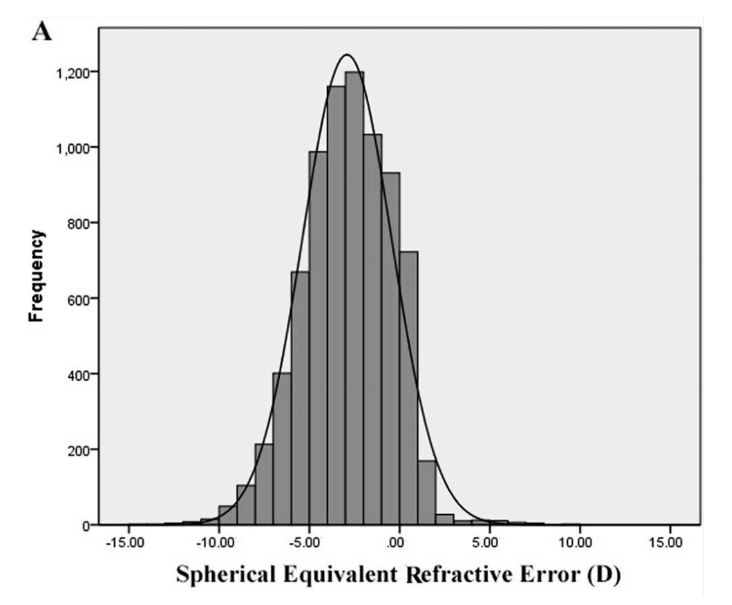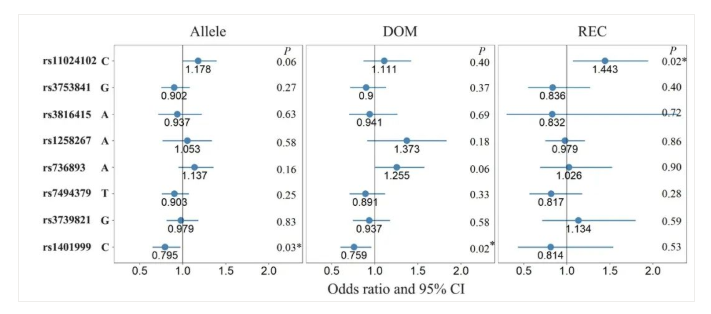The following article is from China Science Journal and is written by China Life Sciences
Myopia is an important public health problem in the world, especially in China. The prevention and control of myopia among children and adolescents has become a national task jointly promoted by the Ministry of education, the health commission and other eight ministries and commissions. However, the increasingly fierce social competition and modern way of life and work make it impossible to avoid the risk factors of accelerating the progress of myopia, but the effect of the measures used to slow down the progress of myopia is limited. Therefore, it is urgent to start from the pathogenesis and seek effective intervention targets and prevention methods to curb and delay the occurrence and development of myopia.
In addition to the above inevitable environmental factors, genetic factors also play a role in the occurrence and development of myopia. As a polygenic disease, myopia has complex pathogenic genes and mechanisms. Previous scholars have paid more attention to the risk genes of myopia, but the genes found can only explain part of the occurrence of myopia. Therefore, it is difficult to study from the perspective of myopia risk genes.
Interestingly, we see that although the prevalence of myopia has increased significantly in recent years, 10% - 20% of them still do not have myopia until adulthood. So, in the same environment that easily leads to myopia, why don't these people be myopia? Is it possible that they have some gene regulation to prevent them from myopia?

Figure 1 Diopter distribution in Anyang college students' eye disease research
The risk gene associated with primary angle closure glaucoma may be the protective gene of myopia
Recently, Professor Wang Ningli's team from Beijing Tongren Hospital published a research paper entitled "new loci for refractive errors and ocular biological parameters in young Chinese Han Adults" at SCI China Life SCI, and found the answer to this question. Researchers believe that eye features such as short axis, shallow anterior chamber and thick lens thickness may be related to the inhibition of myopia. Finding these phenotype related genes may be an important way to inhibit myopia. Primary angle closure glaucoma (PACG) is mainly related to the changes of ocular anatomical parameters, and its important characteristics are consistent with the above phenotype. Therefore, the researchers suggest that the risk gene associated with primary angle closure glaucoma may be the protective gene of myopia.
Based on the previous research results reported by Professor Wang Ningli's team on NAT Genet and PLoS genet, as well as other previous studies on PACG related genes, the researchers analyzed the association of these PACG related genes with myopia and ocular biological parameters in 2678 young adults of Chinese Han nationality for the first time. Among these genes, they found that the loci on abcc5 and chat genes may be protective factors for different degrees of myopia.

Figure 2 Forest map of the association between alleles (allele) and genotypes (DOM, dominant model; rec, recessive model) and low to moderate myopia
The research on protective genes of myopia opens up a new way for seeking effective intervention targets and prevention and treatment methods of myopia
This work found that the abcc5 gene and chat gene related to myopia encode the carrier protein of intracellular secondary messenger transport and choline acetyltransferase respectively, which may act on the development of ocular axis and refraction by regulating the secondary messenger cAMP pathway and muscarinic M receptor. Through further gene functional research, clarify the regulatory role of these two genes in ocular axis length and myopia, and elaborate the mechanism of ocular refractive state and ocular axis development, so as to realize the regulation of key genes or proteins for effective myopia prevention and control.

Figure 3 Schematic diagram of abcc5 gene structure on chromosome 3. Blue shows abcc5 gene, purple shows abcc5-as1 (abcc5 antisense RNA 1), and red horizontal line shows the location of the site under study (the figure is derived from gwas4d database)
In addition, this work shows that looking for protective genes from the opposite ocular phenotype of myopia provides a new idea for effective myopia prevention and control. Other candidate genes related to short ocular axis and shallow anterior chamber were subsequently screened. Through validation in the population and further functional research, more genes and related pathways that protect myopia can be found, so as to find a scientific basis for how to fundamentally inhibit ocular axis elongation and regulate refractive development, and open up a new way for seeking effective myopia intervention targets and prevention and treatment methods.
[References]
1. Wei S, Sun Y, Li S, et al. Refractive Errors in University Students in Central China: The Anyang University Students Eye Study. Invest Ophthalmol Vis Sci. 2018; 59(11):4691-4700.
2. Sun Y, Jin ZB, Wei S, et al. New Loci for Refractive Errors and Ocular Biometric Parameters in Young Chinese Han Adults. Sci China Life Sci. 2022; doi: 10.1007/s11427-021-2069-7.
3. Khor CC, Do T, Jia H, et al. Genome-wide association study identifies five new susceptibility loci for primary angle closure glaucoma. Nat Genet. 2016; 48(5):556-562.
4. Nongpiur ME, Khor CC, Jia H, et al. ABCC5, a gene that influences the anterior chamber depth, is associated with primary angle closure glaucoma. PLoS Genet. 2014; 10(3):e1004089.
5. Vithana EN, Khor CC, Qiao C, et al. Genome-wide association analyses identify three new susceptibility loci for primary angle closure glaucoma. Nat Genet. 2012; 44(10):1142-1146.